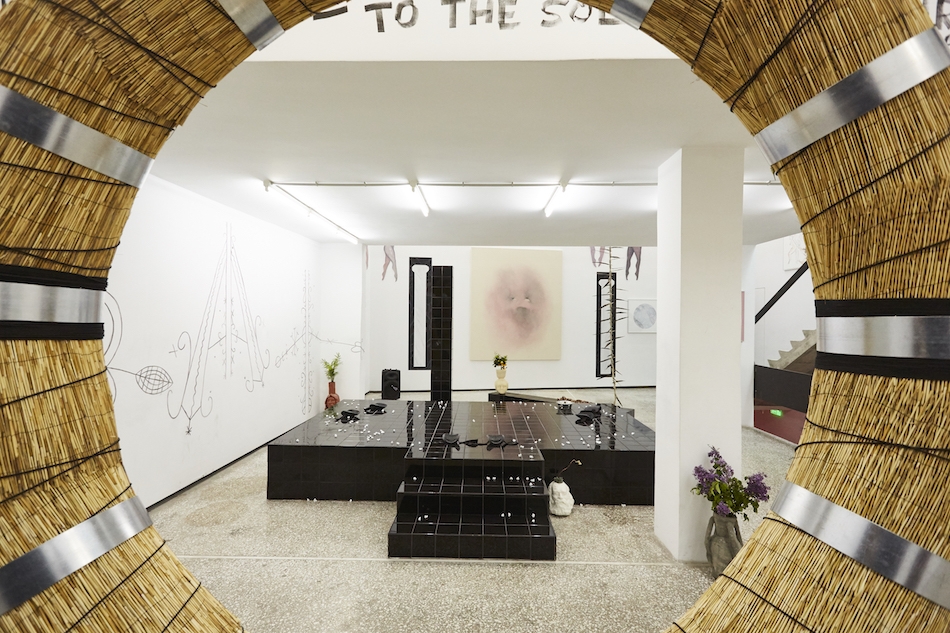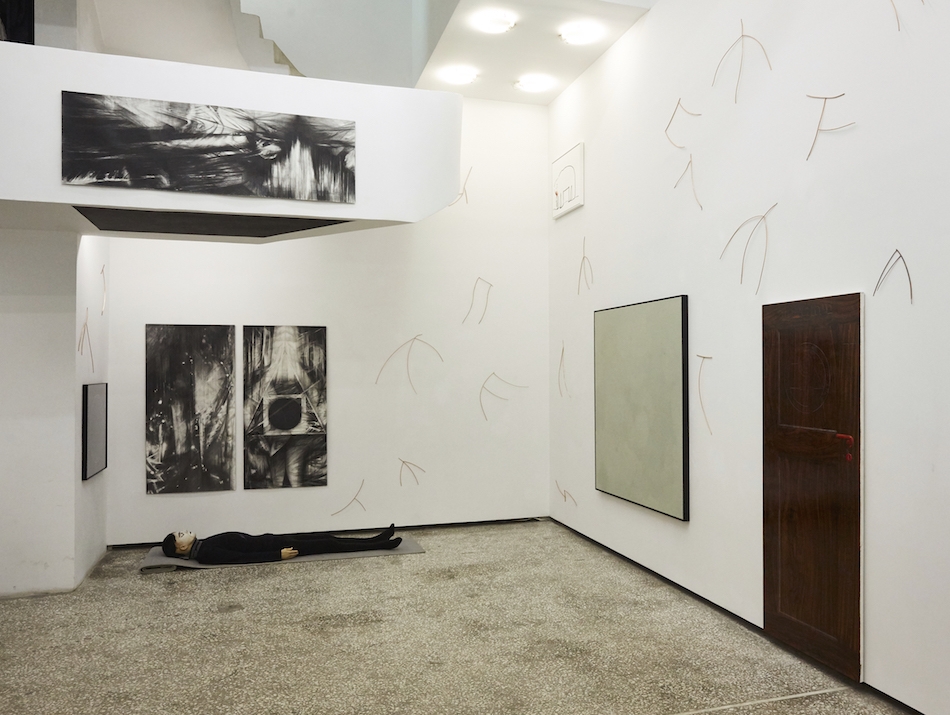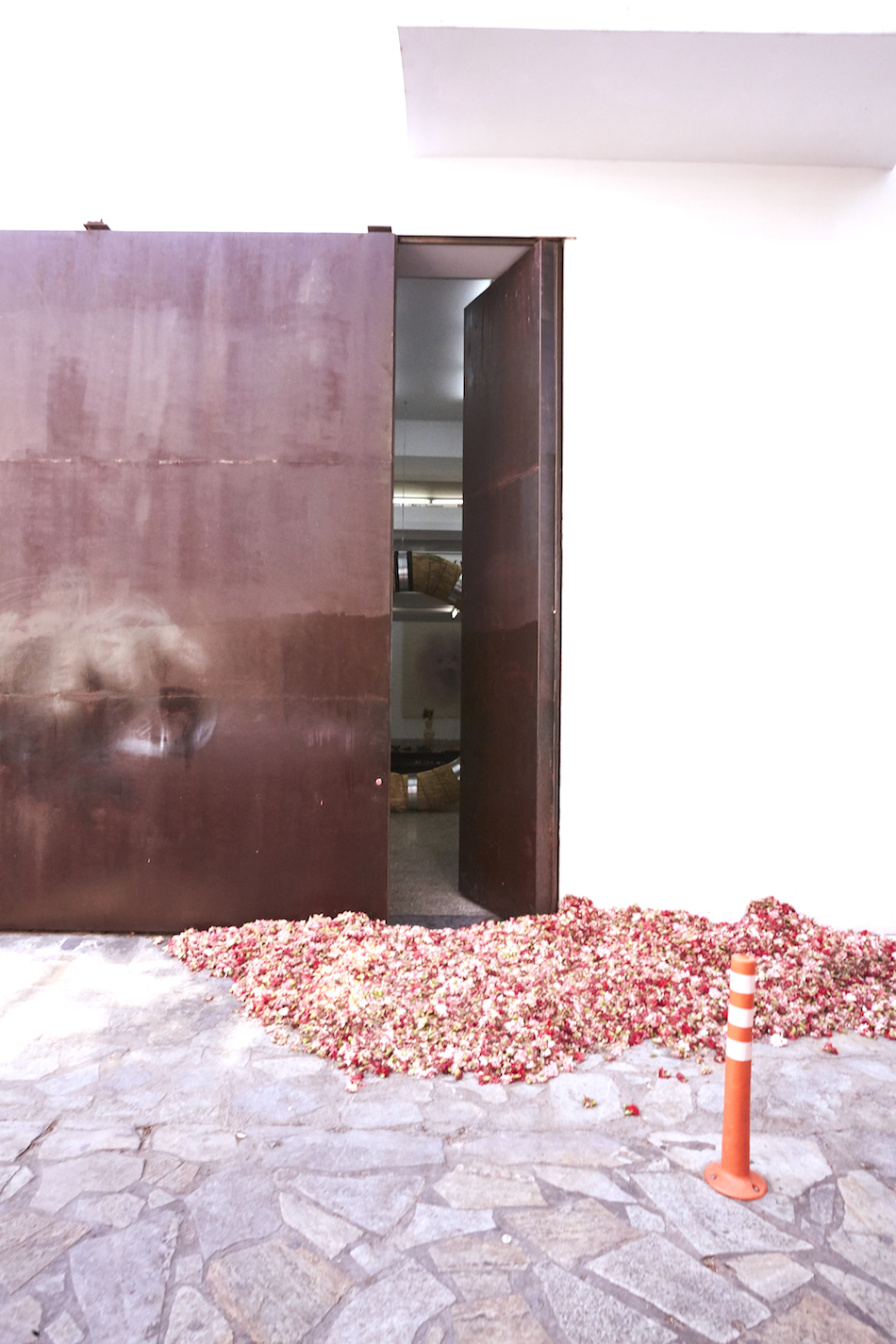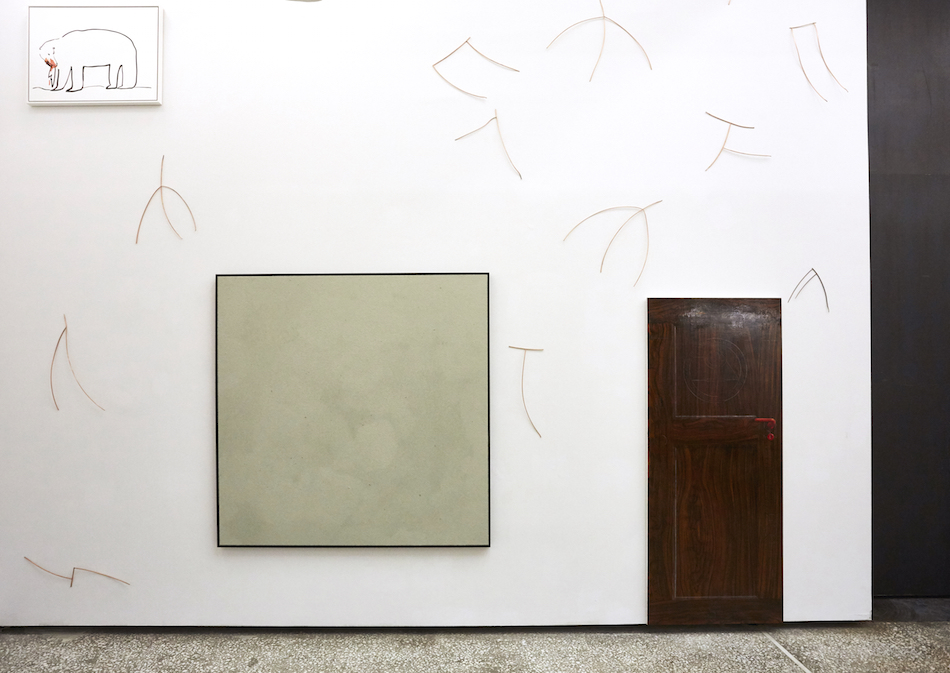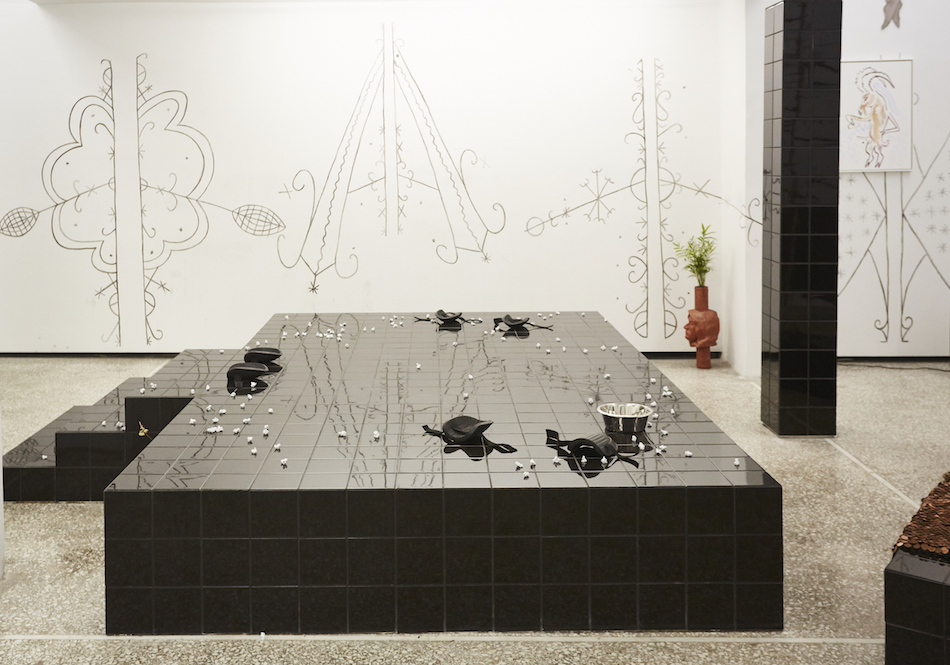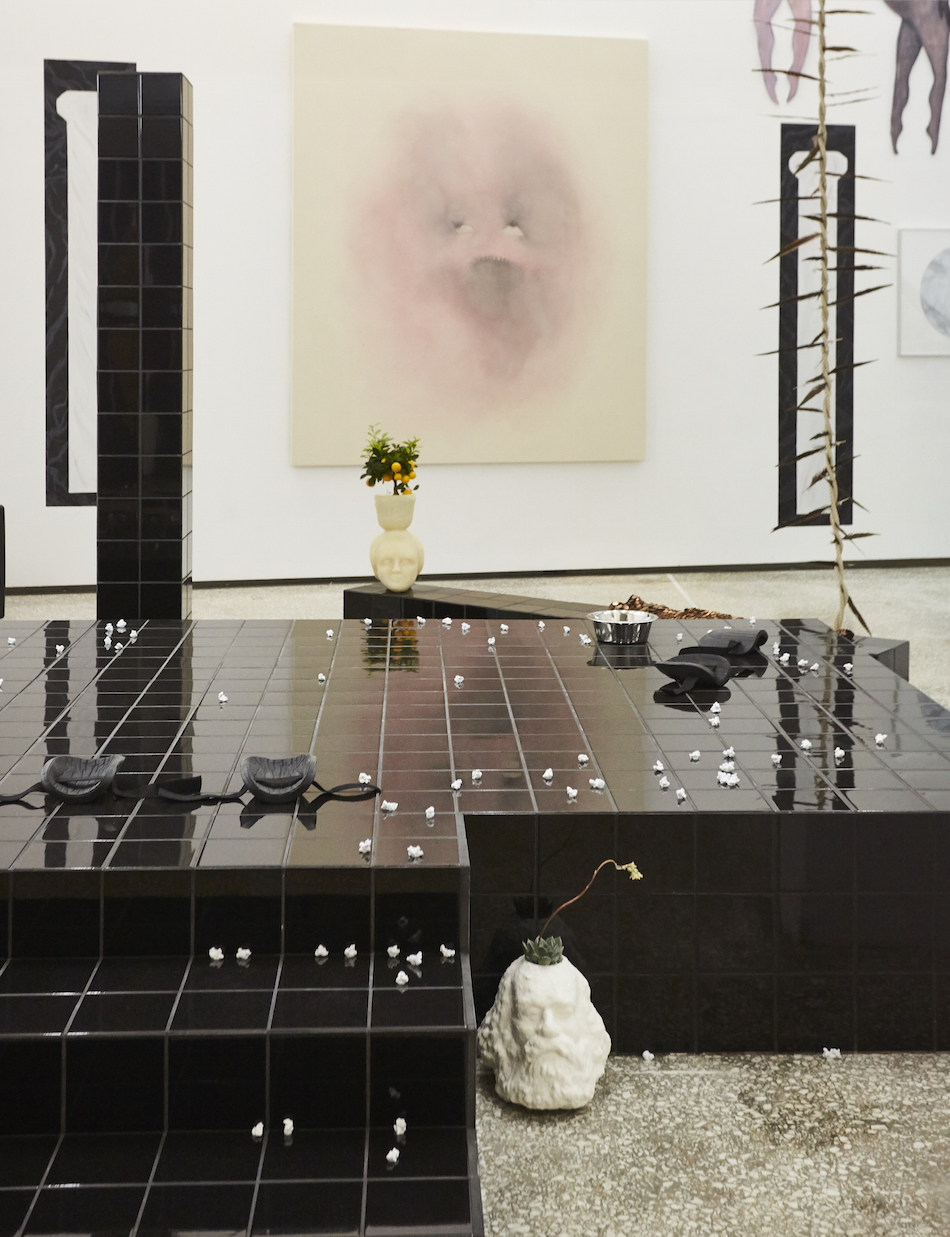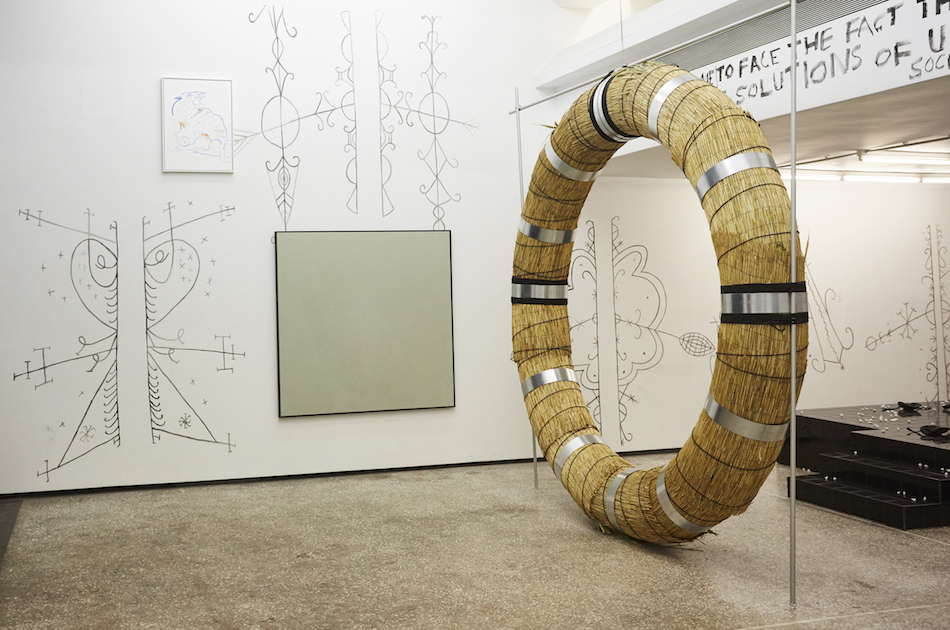Group show curated by Milovan Farronato
Si Sedes Non Is
April 6, 2017–August 26, 2017The Breeder, Athens
Participating artists: Enrico David, Joana Escoval, Anna Franceschini, Delia Gonzalez, Camille Henrot, Karl Holmqvist, Christian Holstad, Maria Loboda, Goshka Macuga, Lucy McKenzie, Paulina Olowska, Christodoulos Panayiotou, Angelos Papadimitriou, Micki Pellerano, Angelo Plessas, Gareth Pugh, Mathilde Rosier, Prem Sahib, Vanessa Safavi with Stéphane Barbier Bouvet, Socratis Socratous
The Breeder is pleased to present SI SEDES NON IS curated by Milovan Farronato. The exhibition, featuring both Greek and international artists, will explore concepts of Discordianism following a magic-laden trek. The gallery will turn into an alchemical squat, a chaotically orchestrated gathering of sculptures, paintings and magical writings which will be activated over the course of the opening, starting on Thursday April 6 before midnight until 4am in the morning, through a series of carefully selected, yet anarchic performances.
In August 1994 on a small island off the coast of Scotland, Bill Drummond (a self-confessed art terrorist) and Jimmy Cauty, founders of the anarchist group K Foundation, incinerated £1,000,000. The process was documented on super 8-film by their trusted friend and cameraman Gimpo and became since then known with the title of the video, Watch the K Foundation Burn a Million Quid. The duo then signed a contract agreeing to only release their reasoning behind the actions 23 years on, in 2017. Will this be the year that the K Foundation breaks their silence? The mysticism of Drummond and Caulty’s actions is viewed in a philosophic context as a microcosm of what was to come with the forthcoming global economic crash, as though it had been envisioned before it even happened, invoking forms of clairvoyance, telepathy or magic to their actions.
Entrenched with ideas of esoteric alternative solutions the exhibition interrogates witchcraft, mysticism and ritualistic practice and looks to explore alternative immoralities and search for the archetypal truths that lie within humanity.
Recreating a purification gate from steel, wood and hay Maria Loboda’s emblematic Chinowa is what the visitor encounters first upon entering the show. It will remain undetermined whether it separates the sacred from the profane or vice versa… By restaging symbols and rearranging signs Loboda, who has a penchant for encrypted messages and meanings, develops a very special form of contemporary archaeology. Eyeing throughout it, one can see the tiled stage by Prem Sahib, which evokes certain gendered spaces where the body is alternatively exposed, honed and celebrated (the changing room, the gym, the public toilet). The installation turns to be an altar, stage and stake where to burn knowledge and host the performances of the opening night. Two spare columns lay closeby, like some post modern ruins, loaded with possible meaning. An entanglement of textile microphones sculptures by Christian Holstad rests on top of a plinth, as persuasive as voiceless. As a backdrop, a screaming, smokey head by Enrico David laments itself. Perhaps, in reason of Delia Gonzalez’ pentimento, a painterly spell which she will apply to the two painted columns at its sides.
Other than spells, the walls are covered in magical writings and symbols that merge with the works. Three drawings by Micki Pellerano’s are surrounded by an arrangement of glyphs and codes deriving from various sigils. Joana Escoval’s installation, an output of the artist’s continuous alchemic research, seeks ways to address sculpture as appearances that take place along things in their raw state. Karl Holmqvist will also write his own graffiti on the walls as a performative act, on the opening night. A recurrent element is the idea of passageway: gates are painted and constellated with voodoo drawings by Mathilde Rosier while Lucy McKenzie realised a painting of the Alchemical Door. A further leitmotif find its roots in cosmology: both in Delia Gonzalez moon paintings and reenactment of Gurdjieff’s choreographies inspired by the movement of the planets and in Camille Henrot drawings, which mark the cardinal points inside the show.
Christodoulos Panayiotou’s pulp paintings relate to K Foundation’s burning of money, as the works are made of pulped dollar bills. Political and symbolic representation disappear under a monochrome mass, where all iconographic particularities have been washed away. This is a metaphor about the loss of value at work, at the same time as a redemption of all this highly valuable symbolic material, which is not going to be simply abandoned and destroyed but rather, in the effacement of its images, transformed through this quasi-alchemical process into another value, iconic without iconography: the value of art. Other ideas of recycling and reuse of money and currencies with their symbolic weight within our society are provided by a full fashion look, exhibited on a mannequin, from English designer Gareth Pugh’s SS16 collection.
Goshka Macuga’s Somnambulist lays on the floor – the great magician half asleep, half awake, rides the borders between reality and the oneiric dimension and is the only human figure of the exhibition. He lies, indeed, below the triptych by Micki Pellerano which examines the psychic plane where the individual subconscious conjoins with the cosmos in the state of Gnosis, the Knowledge. The rest of the figures are fragmented: the face emerging from a pink cloud in Enrico David’s painting, the bodiless faces of famous philosophers in Goshka Macuga’s vases and the headless bodies in Mathilde Rosier’s drawings of messenger deities, depicted as if they were falling from the sky.
For the needs of the exhibition Socratis Socratous takes the role of a parrot whisperer and installs a garden on the gallery’s roof, intending to charm the stray tropical parrots to make a new home there. These tropical species of Asian descent have naturalized themselves in specific locations of Athens. Drawing parallels with the thousands of refugees and immigrants coming to Athens in search of a welcoming land to call home, Socratous casts his spell and waits for the magic to happen. Socratous also restages his seminal installation Incarnation. A mass of carnation flowers rests against the entrance of the gallery, like a shrine. In this case the flowers of revolution symbolize affluence when thrown en masse at the local live stages “bouzoukia”, but also bear the mark of death when offered as a tribute to the deceased on their tombs.
Descending the stairs to the lower level of the exhibition, one enters a dark space where where multiple objects reanimated by Paulina Olowska are illuminated by TV monitors and neon lights. They were found by the artist inside Villa Kadenowka, an abandoned house in Poland which she brought back to life. The objects, charged with energies, symbolically form a cursed musical stave together with the 13 videos by Anna Franceschini and the 13 neon works by Angelo Plessas, from the series Malismania – Curses to save mankind. As mankind is moving towards dark times, these neon malismans reverse energies backwards and are dedicated to the ones who cause: Extinction, Oppression, Recession, Segregation,Εxhaustion, Corruption, Aggression, Desperation, Degradation, Rejection, Destitution, Intimidation, Depression. Within the context of the show, the basement has a further role: that of being both a dressing and a waiting room for the performers – who will unorderly and randomly alternate each other on the stage during the night of April 6th. Other than those already mentioned, the performances will range from Christodoulos Panayiotou’s reading of Mme de Sevigny’s 1676 letter describing the execution of a famous sorceress to a reenactment by Mathilde Rosier of her choreography Abstracting Attraction; a dj-set by Micki Pellerano and Delia Gonzalez; an unpredictable intervention by Angelos Papadimitriou and a spoken interaction out of a new text by Vanessa Safavi with Stéphane Barbier Bouvet.
The title of the exhibition SI SEDES NON IS derives from an ambiguous quasi-palindrome meaning both “If you sit, do not go,” and “If you do not sit, go”. The phrase is inscribed on the doorstep of the The Alchemical Door in Rome (also known as Alchemy Gate or Magic Portal), a monument built between 1678 and 1680 by occultist Massimiliano Palombara, marquis of Pietraforte. Here it serves as a prediction and an instruction to the unsuspecting visitors. A painted red handle squats Lucy McKenzie trompe l’oeil wooden Door: it is there to be turned by those who dare.
Milovan Farronato is Director and Curator of the Fiorucci Art Trust, for which he has developed the ongoing residential itinerant project Roadside Picnic and, since 2011, the yearly festival Volcano Extravaganza in Stromboli. With Paulina Olowska he initiated in 2014 the symposium Mycorial Theatre in Rabka, Poland, which in 2016 was held in São Paulo. Further collaborations include the Magazine Sessions (2016) with the Serpentine Galleries: performative nights which have included Matt Copson con Felicita e Musarc, Anthea Hamilton, Celia Hempton, Karl Holmqvist, Christian Holstad ed Emily Sundblad. He conceived The violent No! as part of the public programme of the 14t h Istanbul Biennial, 2015. From 2005 to 2012 he was director of the non-profit organisation Viafarini and curator at DOCVA Documentation Centre for Visual Arts, Milan. From 2006 to 2010 he was Associate Curator of the Galleria Civica di Modena. He was also professor of Visual Cultures at CLADEM, University IUAV, Treviso, Venice from 2008 to 2015. Recent exhibitions curated by Farronato include Prediction at Mendes Wood, DM Sao Paolo, 2016; Peter Doig’s solo exhibition at Fondazione Bevilacqua La Masa, Venice, 2015; Intim Im Team by Lucy Mckenzie and Josephine Reisch at White Cubicle, London, 2015; Christodoulos Panayiotou’s solo show at Kaleidoscope Project Space, Milan, 2014; and Arimortis at Museo del Novecento, Milan, co-curated with Roberto Cuoghi, 2013.

